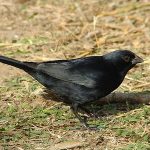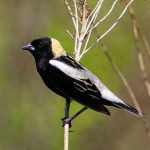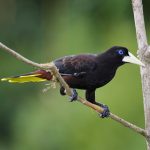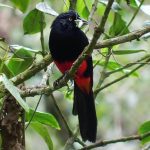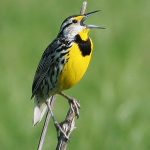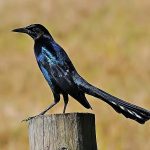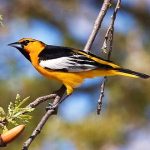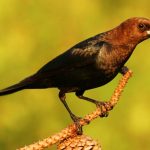Baltimore oriole
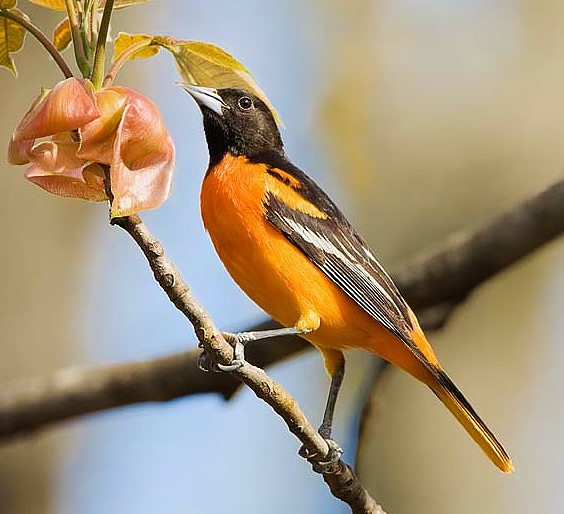
 |
| Photo by Henry Domke (Health Care Fine Art) |
Common name:
Baltimore oriole (en); corrupião-de-Baltimore (pt); oriole de Baltimore (fr); turpial de Baltimore (es); Baltimoretrupial (de)
Taxonomy:
Order Passeriformes
Family Icteridae
Range:
This species breeds throughout the eastern United States, south-eastern Canada and north-eastern Mexico, and migrate south to winter in Florida, from Mexico to western Colombia and northern Venezuela and throughout the Caribbean.
Size:
These birds are 17-20 cm long and have a wingspan of 23-30 cm. They weigh 30-40 g.
Habitat:
The Baltimore oriole breeds in open deciduous forests, forest edges, rural areas and urban parks. Outside the breeding season they also use grasslands and tropical moist forests.
Diet:
They mainly eat insects and other invertebrates, berries and nectar, especially caterpillars,
beetles, crickets, grasshoppers, moths, and flies, spiders, snails, mulberries, cherries and grapes.
Breeding:
Baltimore orioles are mostly monogamous, although extra-pair paternity is known to happen. They breed in May-June and nest on a tightly woven pouch located on the end of a branch, which the female builds using any any plant or animal materials available. It is usually placed 7-9 m above the ground. The female lays 3-7 pale greyish or bluish white eggs with brown and black blotches and streaks. She incubates the eggs alone for 11-14 days. The chicks are fed by both parents and fledge 11-14 days after hatching, becoming independent shortly after.
Conservation:
IUCN status -LC (Least Concern)
This species has a very large breeding range and a global population estimated at 6 million individuals. The population is suspected to be stable in the absence of evidence for any declines or substantial threats.
